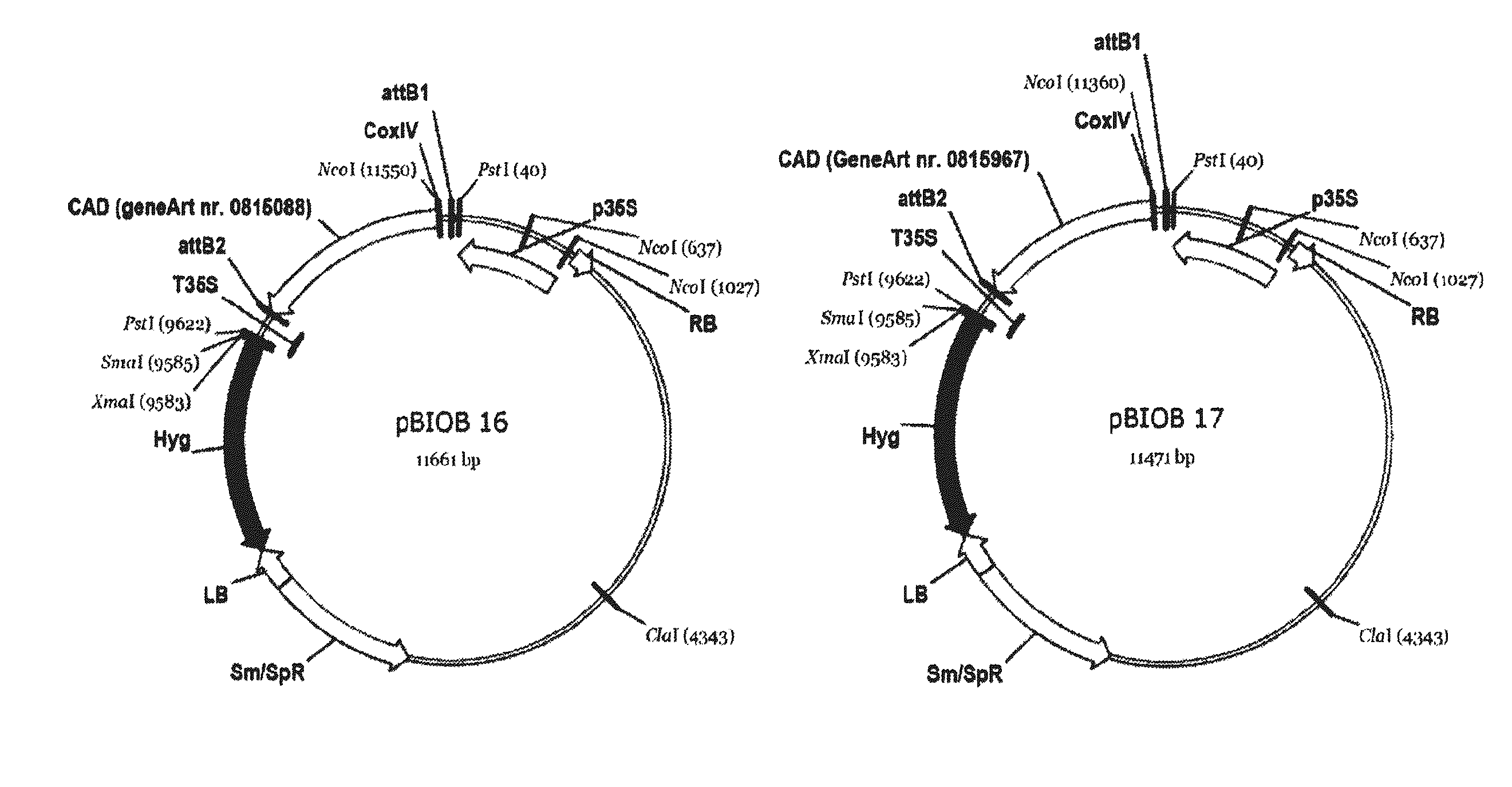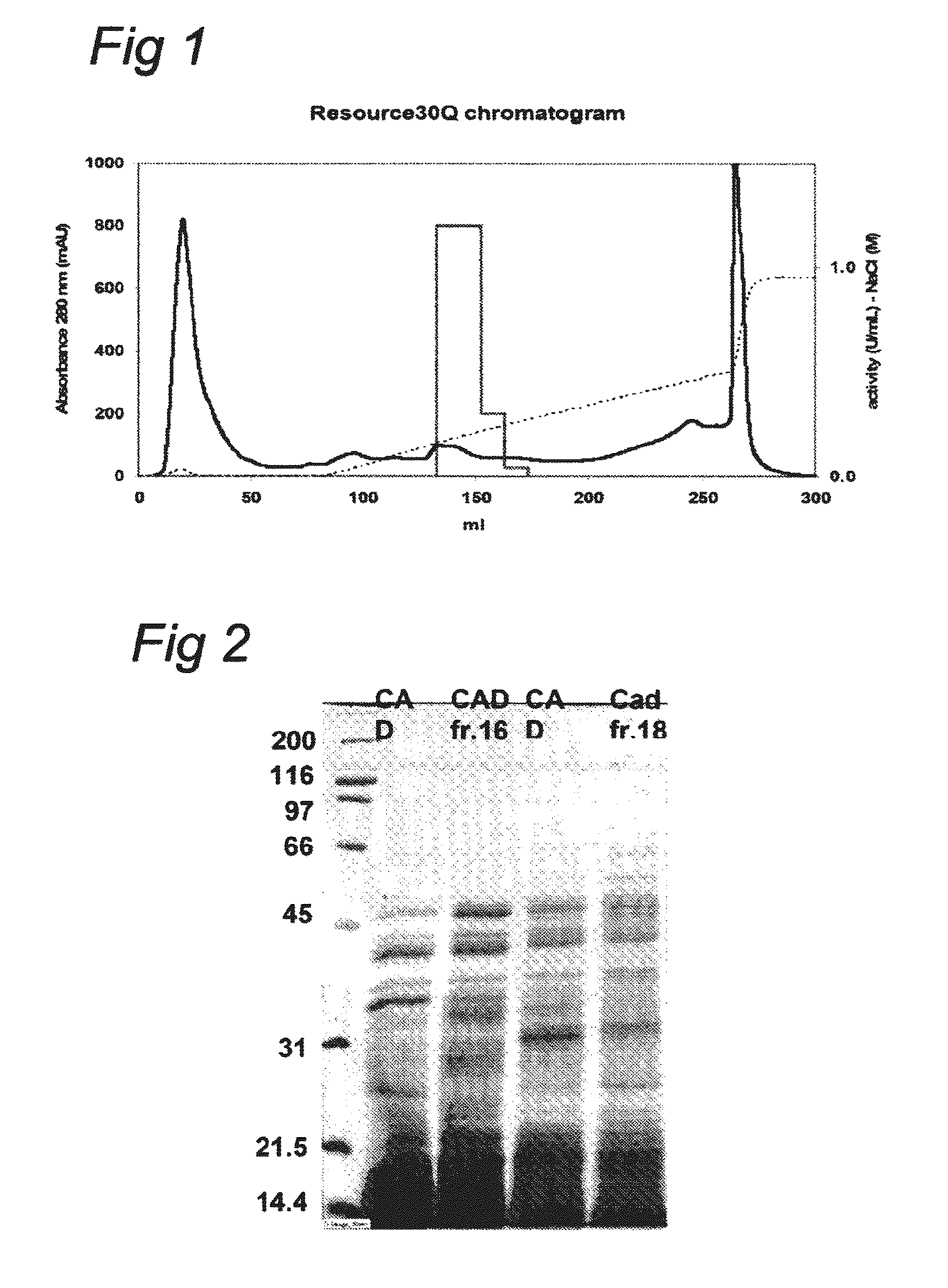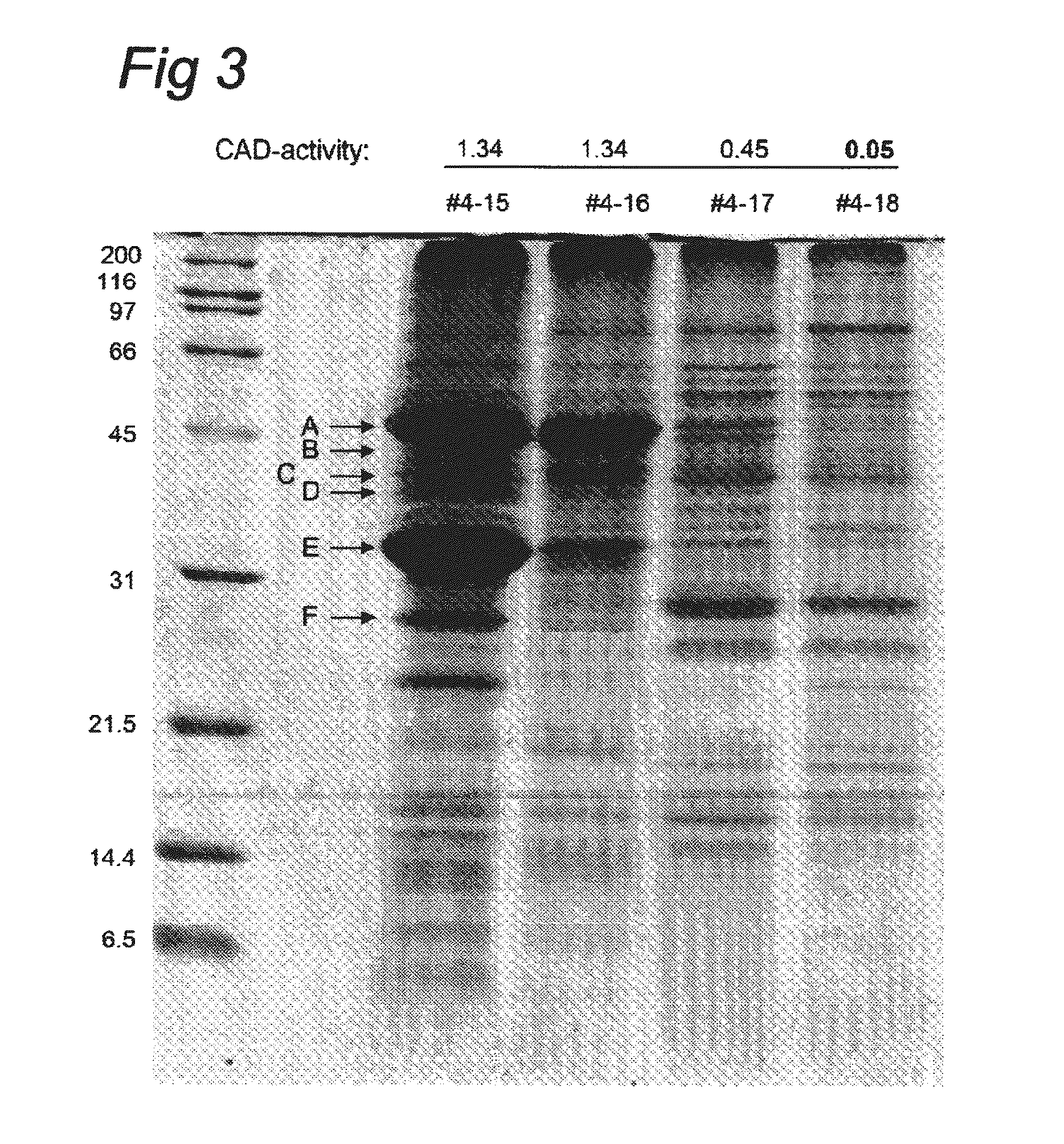Nucleotide sequences coding for cis-aconitic decarboxylase and use thereof
a technology of cis-aconitic decarboxylase and nucleotide sequence, which is applied in the field of nucleotide sequence coding for cis-aconitic decarboxylase, can solve the problems of high production cost, and limiting the use of this promising biological molecule as a building block for high value chemical intermediates and polymers
- Summary
- Abstract
- Description
- Claims
- Application Information
AI Technical Summary
Benefits of technology
Problems solved by technology
Method used
Image
Examples
example 1
cis-Aconitate Decarboxylase (CAD) Activity Assay
[0116]The enzyme activity determination was essentially as described (Bentley et al., 1957 supra; Dwiarti et al., 2002, J Biosci Bioeng 94(1):29-33). 800 μl of 0.2 M sodium phosphate pH 6.5 was mixed with 100 μl 10 mM cis-aconitic acid and 100 μl protein solution and incubated for 20 till 60 min at 37° C. The reaction was stopped by the addition of 100 μl 12 M HCl. The amount of itaconic acid formed was determined by isocratic chromatography in 4 mM sulphuric acid on Bio-Rad Aminex HPX-87H column in a Dionex HPLC equipped with an UV detector at 215 nm. Calibration of the signal was accomplished by running a known amount of itaconic acid in a separate run. One unit (U) is one μmol of itaconic acid formed per minute. The same chromatographic assay was used to monitor the amount of itaconic acid formed in the broth of shake flasks or fermenter cultures as being indicative for cis-aconitate decarboxylase (CAD) induction. The protein concen...
example 2
Fermentation and Induction of Itaconic Acid Production in Aspergillus Terreus NRRL 1960
[0117]Aspergillus terreus NRRL 1960 was acquired from Centraal Bureau voor Schimmelcultures, Baarn, the Netherlands. Spores were inoculated on plates of Complete Medium and grown for four days at 30° C. and fresh spores were harvested in 0.9% NaCl 0.005% Tween-80.
[0118]Pre-cultures were grown by inoculating spores (106) into 100 mL pre-culture in 1 L flask containing (g / L): glucose, 25; MgSO4.7H2O, 4.5; NaCl, 0.4; ZnSO4.7H2O, 0.004; KH2PO4, 0.1; NH4NO3, 2.0; CSL (corn steep liquor), 0.5 and after two days a 10% inoculation was transferred to the CAD production medium essentially as described by Cros and Schneider (1993, U.S. Pat. No. 5,231,016) with the following changes (g / l): NH4NO3 (3) instead of urea, MgSO4.7H2O (1.5) and a final pH of 2.0.
[0119]Itaconic acid production was followed during the course of growth by HPLC analysis of the broth and correlated by the CAD activity in a cell free extr...
example 3
Partial Purification of CAD from Itaconic Acid Producing A. Terreus
[0121]Approximately 1 g of frozen mycelium was transferred to a Teflon vessel and grinded with a metal ball for one minute using a dismembrator (Braun-Melsungen, Germany). Multiple batches of the powdered mycelium were resuspended in 10 ml 0.2 M sodium phosphate buffer pH 6.5 containing 1 mM DTT and 1 mM EDTA and allowed to hydrate at 0° C. for thirty minutes while mixing and centrifuged at 15000 g for 30 minutes at 4° C. to obtain the CFE.
[0122]In the purification of CAD the inherent instability of the protein was noticed. Reproduction of the purification described by Dwiarti et al (2002, supra) resulted in a completely inactive CAD preparation after the first purification step. To overcome this problem we adapted the purification method by the addition of potential stabilizers to the buffers (Table 2).
TABLE 2Effect of the addition of stabilizing compounds on the CAD activityInitial CAD ActivityCAD activityRemainin...
PUM
| Property | Measurement | Unit |
|---|---|---|
| Fraction | aaaaa | aaaaa |
| Volume | aaaaa | aaaaa |
| Volume | aaaaa | aaaaa |
Abstract
Description
Claims
Application Information
 Login to View More
Login to View More - R&D
- Intellectual Property
- Life Sciences
- Materials
- Tech Scout
- Unparalleled Data Quality
- Higher Quality Content
- 60% Fewer Hallucinations
Browse by: Latest US Patents, China's latest patents, Technical Efficacy Thesaurus, Application Domain, Technology Topic, Popular Technical Reports.
© 2025 PatSnap. All rights reserved.Legal|Privacy policy|Modern Slavery Act Transparency Statement|Sitemap|About US| Contact US: help@patsnap.com



